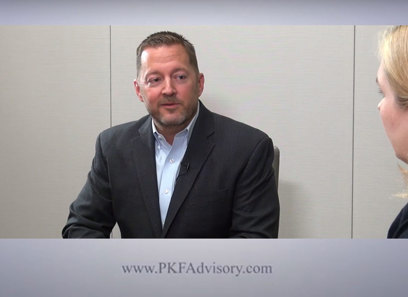What to Expect from M&A Outlook in 2025: Predictions and Market Insights
What to Expect from M&A Outlook in 2025: Predictions and Market Insights
Blog Article
Discovering the Monetary and lawful Aspects of Mergers and Acquisitions Purchases

Overview of Mergers and Acquisitions
Mergers and acquisitions (M&A) represent a significant segment of corporate method, with plenty of purchases taking place globally each year. These strategic maneuvers are primarily targeted at boosting affordable benefit, increasing market share, and attaining functional harmonies. M&An activities usually come under two distinct groups: mergers, where two firms incorporate to develop a new entity, and procurements, where one business purchases another, hence keeping its identification.
The motivations behind M&A transactions are varied. Business may seek these methods to diversify their product offerings, get in brand-new markets, or take advantage of technological advancements (Economic factors influencing M&A). In addition, M&A can offer as a means to remove competitors or access to valuable copyright
The process of M&An includes numerous phases, including target identification, evaluation, arrangement, and assimilation. Successful purchases need comprehensive due persistance to assess economic health, operational capacities, and prospective liabilities of the target business. Social alignment in between merging entities plays an important role in making sure a smooth change and long-term success. As services browse the intricacies of M&A, understanding the calculated imperatives and potential difficulties is important for accomplishing wanted end results in an increasingly affordable landscape.
Legal Structure and Compliance
Understanding the legal structure and conformity demands surrounding acquisitions and mergers is important for navigating the intricacies of these deals - Economic factors influencing M&A. These processes are governed by a myriad of laws at both federal and state levels, which intend to make sure fair competition, shield stakeholders, and maintain corporate governance standards
Trick regulative bodies, such as the Federal Trade Payment (FTC) and the Stocks and Exchange Commission (SEC), apply antitrust legislations and protections guidelines, respectively. Firms need to carry out thorough due persistance to identify any kind of prospective legal challenges, including anti-competitive problems or regulative authorizations required for a successful deal.
Furthermore, conformity with disclosure responsibilities is vital, especially when public companies are entailed. This includes filing called for paperwork and giving precise details to shareholders and governing authorities.
Cross-border M&A transactions present added layers of complexity, as differing lawful standards and governing frameworks need to be browsed. Engaging legal advise with experience in procurements and mergings is important to make sure adherence to relevant laws and to minimize risks. Therefore, comprehending these lawful structures not just facilitates compliance yet additionally boosts the likelihood of a efficient and effective merging or procurement.
Financial Appraisal Techniques

Amongst the most typical strategies are the Discounted Capital (DCF) evaluation, which estimates today value of anticipated future money circulations, and the Comparable Company Analysis (CCA), which examines a firm's value about comparable companies within the same industry (Economic factors influencing M&A). In Addition, Precedent Deals Analysis (PTA) examines historical acquisition information to develop standards for valuation
Another considerable technique is the Asset-Based Appraisal, which focuses on the company's net possession value, providing a concrete analysis of worth by taking into consideration both existing and lasting responsibilities and assets. Each method has its restrictions and staminas, commonly differing in applicability relying on the nature of the market and the organization context.
Ultimately, using a mix of these economic assessment methods can produce a comprehensive understanding of a company's worth, aiding to make certain that both customers and sellers take part in reasonable and equitable purchases throughout the complex process of mergers and procurements.
Due Persistance Process
Conducting thorough due persistance is essential to revealing important info about a target firm prior to finalizing a merging or purchase. This procedure entails a detailed review of the target's economic, operational, lawful, and regulatory facets. The main aim is to identify possible dangers and liabilities that might affect the deal's value or post-merger efficiency.

Furthermore, cultural due diligence reviews the compatibility of the combining entities' business cultures, which is critical for an effective integration. The due persistance procedure needs partnership amongst different stakeholders, including lawful advice, financial experts, and market experts, to make certain an all natural understanding of the target business.
Ultimately, the searchings for from due diligence notify negotiation approaches and may bring about modifications in the purchase rate or terms, thus guarding the rate of interests of the acquiring celebration and laying the groundwork for an effective merging or purchase.
Post-Merger Integration Difficulties
While successful mergings and acquisitions commonly generate significant synergies and growth chances, the post-merger integration stage presents a myriad of obstacles that can threaten these benefits. One of the primary issues is the cultural combination of the combining entities.
An additional significant challenge depends on lining up systems and procedures. The assimilation of disparate IT systems, operational methods, and monetary coverage can be complicated and taxing, often leading to operational disruptions. Furthermore, the failing to connect properly throughout this stage can lead to confusion and misinformation among stakeholders, workers, and clients.
Financial combination additionally postures obstacles, especially in resolving financial policies and audit techniques. This misalignment can result in variances in monetary reporting, impacting stakeholder self-confidence and market understanding.
Finally, regulatory conformity problems might emerge, requiring careful attention to lawful demands. Dealing with these challenges immediately and strategically is essential for understanding the expected benefits of a merging or purchase, guaranteeing lasting success and stability.
Verdict
In conclusion, the complex landscape of acquisitions and mergings demands a comprehensive understanding of both financial and lawful facets. Adherence to governing frameworks ensures compliance and reduces anti-competitive risks, while robust monetary evaluation techniques give important insights into firm worth.
The elaborate landscape of mergings and purchases deals requires a detailed understanding of both legal frameworks and economic evaluation methods. Regulative bodies, such as the FTC and SEC, impose stringent conformity demands to guard versus anti-competitive behaviors, while robust economic analysis strategies are crucial for precisely evaluating a firm's worth. Successful transactions call for complete due diligence to assess monetary health and wellness, functional abilities, and potential responsibilities of the target business.Financial due persistance checks out historic and projected economic statements, cash money flow evaluation, and tax conformity. Adherence to regulatory structures ensures compliance and mitigates anti-competitive dangers, while durable monetary evaluation methods give vital understandings into firm worth.
Report this page